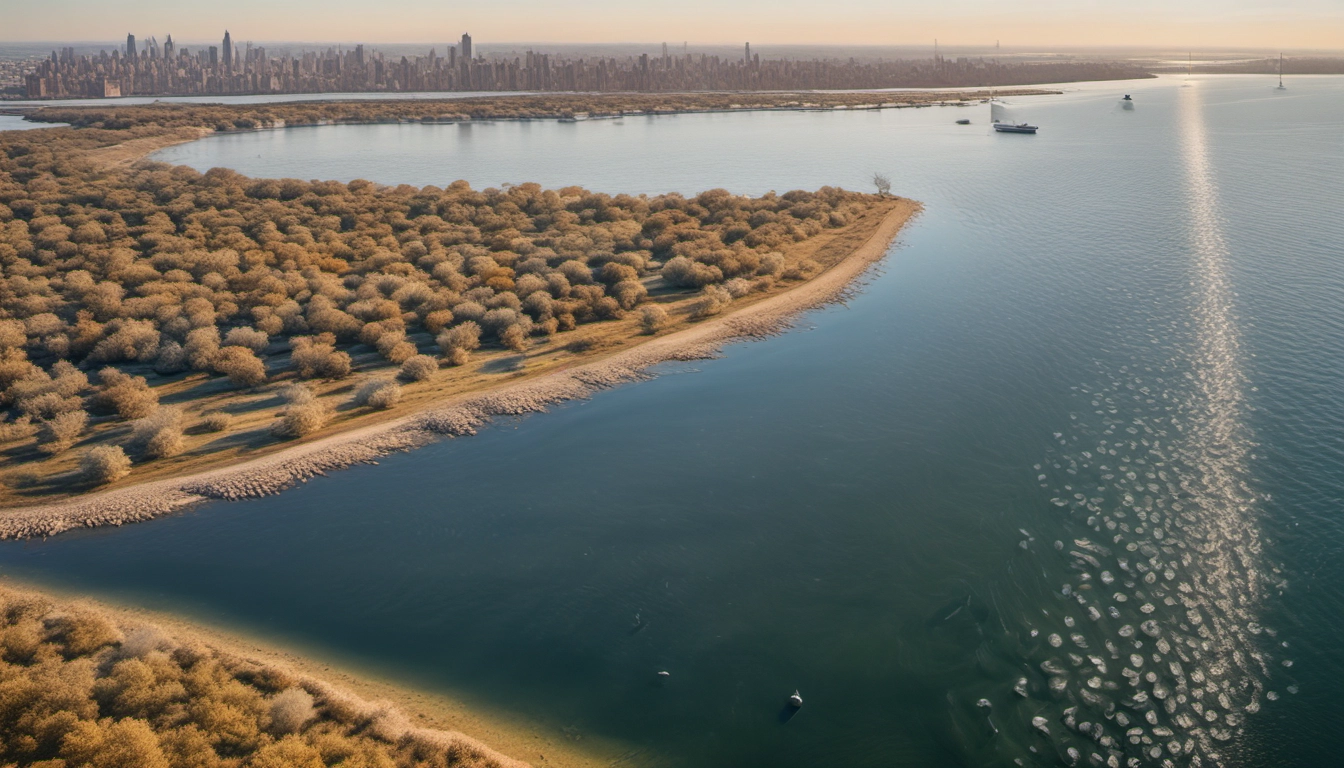Oyster Restoration Playbook: Launch a 90-Day Pilot
Launch a 90-day oyster restoration pilot: step-by-step checklist, shell-recycling ops, nursery setup, monitoring dashboard, and outreach templates.

Quick answer: launch a 90-day oyster restoration pilot
This playbook gives a simple, step-by-step plan to start a 90-day pilot that seeds an oyster nursery, runs a shell-recycling loop, and sets up monitoring. Use the templates to recruit volunteers, track water quality, and show funders early wins. The Billion Oyster Project is the model we draw on; they have restored more than 100 million oysters and about 16 acres of reef, showing this approach works.
Why oysters? One data point and one practical implication
Oysters are filter feeders that clean water and build habitat. For example, the Billion Oyster Project reports 100+ million oysters restored so far. That shows scale is possible. Practical implication: restoring oysters can improve water clarity and help slow coastal erosion, so a pilot can produce measurable ecological and social benefits fast.
What this 90-day pilot will deliver
- A functional shell-recycling collection and cleaning loop
- A small hatchery or nursery setup to raise spat for deployment
- One deployed reef module and baseline monitoring data
- Volunteer and school engagement plan
- Simple budget and funder-ready metrics
Who this guide is for
This playbook is written for nonprofit program managers, school program leads, city resilience planners, and corporate CSR teams who want a repeatable plan for oyster reef restoration in urban estuaries.
High-level timeline: weeks 1–12
- Weeks 1–4: Setup and permits
- Confirm partners: contact local harbor school, university lab, or the Billion Oyster Project for advice.
- Identify deployment site and check local permitting with your state or city agency. See the NY State DEC Head of Bay example for how agencies partner on reefs.
- Set success metrics: number of shells recycled, spat settled, volunteers trained, basic water quality targets (turbidity, dissolved oxygen).
- Weeks 5–8: Operations and nursery
- Start a shell supply chain: recruit local restaurants and markets. The Billion Oyster Project partners with restaurants to collect thousands of pounds of shell weekly.
- Clean and cure shells with a volunteer shift schedule and quarantine area.
- Set up a small floating or land-based nursery tank to set larvae (spat-on-shell). If you cannot culture larvae, partner to buy settled spat from a regional hatchery.
- Weeks 9–12: Deployment and monitoring
- Deploy one reef module: a bagged shell cluster, an oyster cage, or a purpose-built reef unit.
- Begin monthly monitoring: count live oysters, note spat settlement, measure turbidity and DO. Use simple citizen-science protocols so volunteers and students can collect valid data.
- Run an outreach event: a public deployment or school field day that documents progress for funders and media.
Detailed operational checklist
Permits & partners
- Find your local permitting authority and request guidance early.
- Ask about navigation, shell deposit, and species regulations.
- Build partnerships: schools, local marinas, research labs, non-profits, and a local hatchery.
- Document a memorandum of understanding (MOU) with each partner.
Shell-recycling loop (logistics)
- Recruit shell donors (restaurants, fish markets).
- Schedule weekly pickups and log pounds collected.
- Clean shells: rinse, air dry, then cure to remove organics. Use volunteer teams to scrub and bag shells.
- Store cured shells in a quarantine area before deployment.
Nursery basics
- Tank: 200–1,000 L system with gentle flow and aeration.
- Water: filtered and temperature-managed; match local salinity where possible.
- Larvae or spat: source larvae from a qualified hatchery or partner. If using local broodstock, follow biosecurity and disease rules.
- Settle spat on cured shells or alternative substrates (reef balls, ceramic tiles).
Deployment options
- Bagged shell clusters for nearshore shallow reefs.
- Modular reef units for wave protection and habitat.
- Living shoreline installations paired with marsh plantings for erosion control.
Monitoring & metrics
Track metrics that matter to funders and regulators.
- Ecological: live oysters per m2, spat settlement rate, species diversity around reef.
- Water quality: turbidity, dissolved oxygen (DO), salinity, basic nutrient samples.
- Social: volunteer hours, students engaged, pounds of shell recycled.
We provide a downloadable monitoring dashboard CSV you can upload to spreadsheets. Use monthly checks for the first year, then quarterly.
Education & volunteer playbook
- Create a simple school module: classroom lesson + one field day at nursery.
- Volunteer scripts: safety briefing, shell cleaning steps, counting protocol.
- Use hands-on tasks so students measure results and learn reef science.
Budget snapshot for a small pilot
| Item | Estimated cost (USD) |
|---|---|
| Nursery tank & pumps | $2,000 |
| Boat or deployment gear rental | $1,500 |
| Shell transport & storage | $500 |
| Monitoring tools (secchi, DO meter) | $1,000 |
| Volunteer training materials | $250 |
Many programs offset costs with in-kind partnerships and grants. In New York State, the State Environmental Protection Fund has supported BOP projects as an example.
How to show early wins to funders
- Report simple KPIs: pounds of shell recycled, number of volunteers, spat settled.
- Use photos and short videos from deployment days.
- Share baseline and month-1 monitoring results to show change.
Templates and tools to use
Downloadable assets to prepare:
- 90-day pilot checklist (PDF)
- Shell-recycling ops spreadsheet (collection log, pickup schedule)
- Monitoring dashboard CSV (indicator definitions included)
- Classroom lesson packet (PDF)
- Volunteer outreach email and shift script
Use the Billion Oyster Project site to find volunteer and donation pages and local case studies you can cite.
Common questions (FAQ)
Do oysters improve water quality quickly?
Yes. Oysters filter water continuously. You will see local improvements in turbidity and clarity over months to years. Early changes in volunteer engagement and education are visible in days.
Where do I get larvae or spat?
Partner with a regional hatchery or an experienced nonprofit. The Hudson River Foundation and local marine labs can advise on sourcing.
Is this safe for public beaches?
Follow local health and shellfish regulations. Do not deploy harvestable oysters unless your program meets public health and permitting standards.
Case study highlights
"Billion Oyster Project engages students and volunteers to restore reefs across New York Harbor. They have introduced more than 100 million oysters and run city-wide shell recycling with restaurants." —public reports and project pages
See coverage of program scale and science in articles such as the BBC feature and organizational pages like Billion Oyster Project.
Next steps: launch checklist (one-page)
- Confirm site and permits.
- Secure partner hatchery or larvae source.
- Start shell collection partners and schedule first volunteer cleaning day.
- Set up nursery tank and begin spat settlement.
- Deploy first reef module and begin monthly monitoring.
- Report first 90-day results to funders and partners.
Closing note from the author
Oyster reef restoration is practical and powerful. Use this 90-day pilot to show local benefits, build partnerships, and gather data for scale. Small, well-run pilots create the proof funders need. For more resources and examples, visit the Billion Oyster Project and read government partnership examples like the NY Governor announcement.

